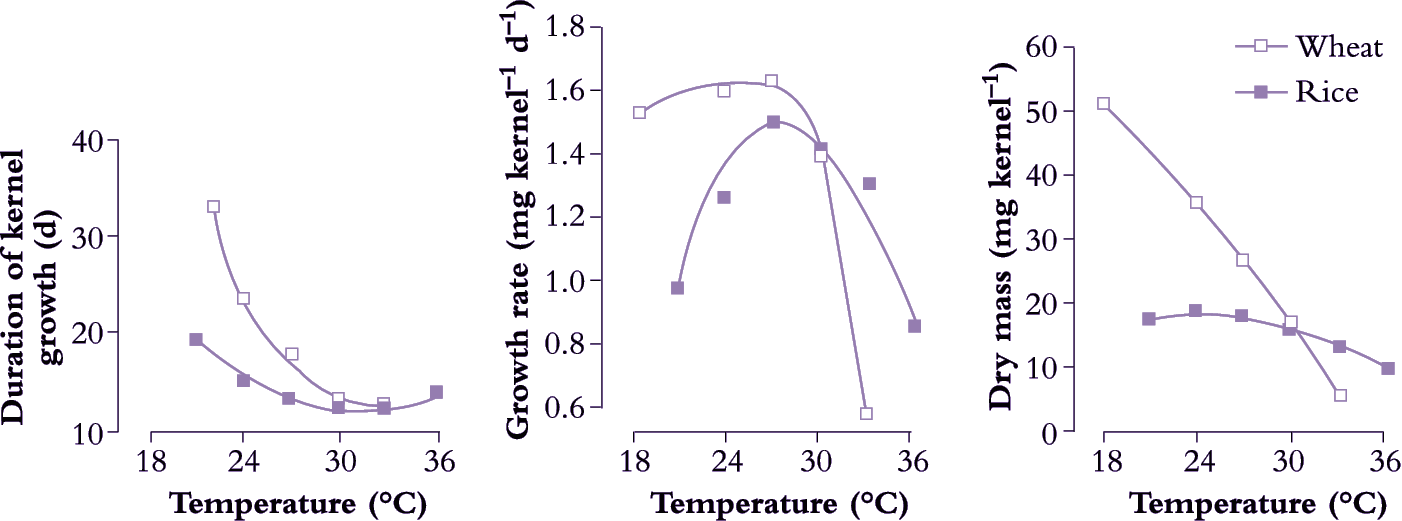At any given stage of development, it is possible to define the minimum temperature below which a plant will not grow, suboptimal temperatures where a further increase in temperature will result in increased growth, optimal temperatures when growth is at its maximum, supraoptimal temperatures where a decrease in temperature will result in increased growth and the maximum temperature above which a plant will stop growing. Sustained temperatures beyond this range will be lethal.
Temperature is an important factor in controlling changes in growth and development from germination, through vegetative growth to floral initiation and reproductive growth. Not all stages of development, or different physiological processes, are equally sensitive to temperature. For example, the stage of pollen meiosis during anther development in rice is particularly sensitive to low temperature extremes, whereas in wheat it is less so. Variation in temperature tolerance is also evident within single plants as well as between genotypes. Young actively growing tissues are generally more sensitive to temperature variation than mature tissues and dormant tissues such as buds and seeds can often survive quite extreme temperatures. Frost tolerance in apple is greatest in the stem and then follows a sequence of decreasing tolerance from the mature leaf to the young leaf and floral parts, with the ovary, style and stigma of flowers being least tolerant of frost.
Variation in temperature sensitivity between tissues and physiological processes is also seen in sorghum, a subtropical C4 species. Frost damage occurs to green tissue below –1°C, there is poor seed germination below 6°C, chlorophyll destruction occurs in mature green tissue under high light at 10°C, there is poor pollen development below 13°C and chlorophyll formation in young developing leaves is inhibited at temperatures below 16.5°C (Bagnall 1982).
Temperature effects on growth can be viewed in terms of rate multiplied by duration of growth where individual components have different temperature optima (Figure 14.7). As temperature increases within a plant’s dynamic range, duration of growth decreases but rate of growth increases. As a consequence, organ size at maturity may change very little in response to temperature despite variation in growth rate. As temperatures are raised further, an increased rate of growth is no longer able to compensate for a reduction in duration, and the final mass (or volume) of a given organ at maturity is reduced. This is providing that soil water can be maintained during this period. This response can be seen in a range of tissues including leaves, stems and fruits (and seeds). A smaller organ size at maturity due to high temperature is usually associated with smaller cells rather than a change in cell number.
